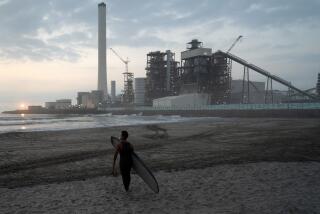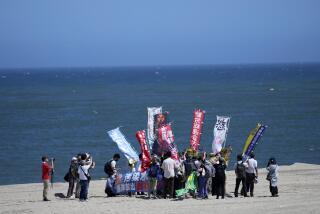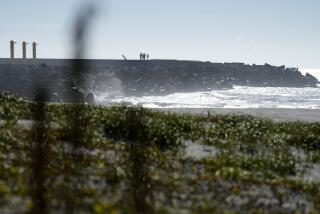Weather and radiation levels are key factors in exposure
Nobody knows how much radiation ultimately will be released in the Japanese nuclear crisis. That and the weather are the biggest factors in how much environmental cleanup will eventually be needed. Here are answers to some basic questions.
Where will the radioactive particles released in the accident end up?
Radioactive particles travel like dust in the wind. The contamination will be concentrated closest to the reactor complex and diminish with distance. The patterns can be peculiar.
After the Chernobyl nuclear disaster in 1986, some villages in Belarus had to be abandoned and resettled, but serious radioactive fallout missed other villages just a few miles away. The difference had to do with rainfall in the days after the accident.
What about reports that some particles released in Japan are turning up continents away?
This is largely a testament to the incredible sensitivity of instruments used to monitor radiation. A U.S. Energy Department station in Sacramento on Friday detected radioactive xenon-133 believed to have come from the Fukushima No.1 (Daiichi) plant in Japan — in a concentration so tiny that the radiation it emits is one-millionth of what people constantly receive from natural background sources such as rocks, bricks and the sun.
Is the ocean or sea life in danger?
No. In fact, the best-case scenario is that radioactive dust settles on the Pacific Ocean. Even massive amounts of radioactive debris would quickly be diluted to harmless concentrations. So far, the winds have been cooperating.
For particles that settle on land, how long will they stick around?
The two most significant radioactive isotopes released when nuclear fuel breaks down are iodine-131 and cesium-137. Iodine-131 essentially disappears within a few months. Cesium-137, on the other hand, can remain a danger for several years, and takes hundreds of years to decay entirely.
Experience from Chernobyl shows that levels of cesium-137 contamination vary with soil type and agricultural practices. It turned up in cows, wild mushrooms, berries and reindeer, as well as in some lakes and freshwater fish.
In most settlements, however, radiation levels have returned to what they were before the accident.
What is likely to happen to the nuclear plant site?
Even if the crisis is contained, the plant has probably been damaged beyond repair, and whatever nuclear contents remain will have to be sealed off. This could mean entombing the facility in concrete, as was done at Chernobyl. Many experts, however, doubt whether that will be a viable option for Fukushima. As for the area immediately surrounding the facility, its fate depends on future radiation readings.
What can Japan and its neighbors do to limit radiation exposure?
The risk that radioactive iodine poses to humans can largely be avoided by not drinking locally produced milk in the weeks following the accident.
After the disaster at Chernobyl, then part of the Soviet Union, the Soviet government restricted access to forests for hunting and gathering food and firewood. Chemicals known as cesium binders, such as bentonite, were fed to some livestock; these substances mop up cesium and interfere with its absorption in the body. Germany and Scandinavian nations regulated consumption of some fish.
Such restrictions in the lands around the nuclear plant would be felt throughout Japan. Fukushima prefecture has a substantial agricultural sector, with apple, peach and pear orchards, as well as livestock farming.
How does all this translate into how much radiation the general population in Japan might eventually receive from the Fukushima plant?
Scientists say there is little chance that the Japanese crisis will result in a radioactive release on par with Chernobyl, the worst nuclear power plant disaster in history. But for context, it is helpful to look at the radiation exposure people received after that accident.
According to the United Nations, the 6 million people living in the zones that the Soviet government deemed to be contaminated received an average of 9 millisieverts of radiation from 1986 to 2005. That’s about the same as what a patient receives from a typical CT scan. And that average was significantly raised by the 150,000 people among this group who got a dose of more than 50 millisieverts.
About 5.4 million people — 90% of the group — received less than 2 millisieverts, which is a little less than what the average person gets in a year from everyday background sources.
In areas of Europe that were deemed contaminated, the average person got 0.3 of a millisievert.
More to Read
Sign up for Essential California
The most important California stories and recommendations in your inbox every morning.
You may occasionally receive promotional content from the Los Angeles Times.











